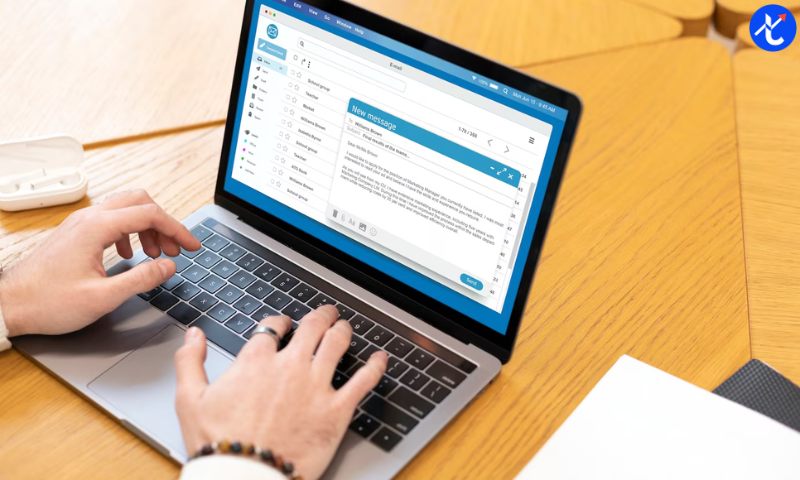Email design plays a crucial role in digital marketing, ensuring that messages are visually appealing, easy to read, and engaging for recipients. A well-designed email can boost open rates, increase click-through rates, and enhance brand recognition. Unlike plain text emails, a structured and aesthetically pleasing email can make a lasting impression on subscribers, helping businesses connect effectively with their audience.
Modern email design involves multiple elements, including layout, typography, color schemes, images, and responsive formatting. With a growing number of users accessing emails on different devices—smartphones, tablets, and desktops—it’s essential to create designs that are adaptable and visually appealing across all platforms.
Additionally, email design is not just about aesthetics; it must align with marketing goals. Whether promoting a product, sharing an update, or nurturing leads, every email should have a well-thought-out structure that guides the reader toward taking action. With the rise of AI-powered tools and automation, designing emails has become more efficient, allowing businesses to personalize their messaging like never before.
Importance of Email Design in Marketing
Email marketing remains one of the most effective ways to communicate with customers, generate leads, and increase conversions. However, the effectiveness of an email largely depends on its design. Poorly designed emails can be ignored, deleted, or marked as spam, leading to lost opportunities.
Here’s why email design is vital for marketing success:
1. First Impressions Matter
The visual appeal of an email can make or break engagement. A well-designed email immediately grabs attention, while a cluttered or poorly formatted email can drive recipients away. With people receiving dozens of emails daily, making a strong first impression is key.
2. Enhances Readability and Engagement
Emails should be easy to scan, with clear headings, concise text, and strategic use of images. A good design ensures that recipients can quickly grasp the message without feeling overwhelmed by too much text. Using bullet points, white space, and well-structured content makes emails more digestible.
3. Boosts Click-Through Rates (CTR)
Engaging designs encourage recipients to take action, whether it’s clicking on a call-to-action (CTA) button, visiting a website, or making a purchase. A well-placed CTA with a compelling design can significantly improve conversion rates.
4. Strengthens Brand Identity
Consistent use of colors, fonts, and logos in email designs reinforces brand identity. When subscribers see a familiar design, they immediately recognize and trust the sender. This consistency builds credibility and strengthens the relationship between businesses and their audience.
5. Optimized for Mobile Users
With over 60% of emails opened on mobile devices, responsive email design is a necessity. If an email is not optimized for mobile viewing, it may appear broken, leading to a poor user experience. Using mobile-friendly layouts ensures that emails look great on all devices.
6. Personalization and Dynamic Content
Modern email design integrates AI and automation to create highly personalized messages. Dynamic content allows businesses to tailor emails based on user preferences, behaviors, and demographics. Personalization enhances customer engagement, making emails more relevant and valuable.
Key Elements of Effective Email Design
An impactful email design should include:
- A compelling subject line: Encourages users to open the email.
- Clear call-to-action (CTA): Guides users toward the desired action.
- Engaging visuals: Makes content more appealing and digestible.
- Responsive design: Ensures compatibility across devices.
- Personalized content: Creates a more engaging user experience.
Best Email Design Templates
There are numerous free and premium email design templates available for businesses of all sizes. These templates help streamline the design process while ensuring a professional look. Some popular options include:
- Minimalist templates: Clean layouts with focused messaging.
- Newsletter templates: Ideal for sharing updates and promotions.
- E-commerce templates: Designed for product showcases and discounts.
Choosing the Right Email Design Software
Selecting the right email design software can significantly impact efficiency and creativity. Some of the best email design tools include:
- Canva: User-friendly interface with drag-and-drop features.
- Adobe XD: Ideal for advanced email design.
- Mailchimp: Integrated email builder with automation features.
- Constant Contact: Suitable for beginners with pre-made templates.
Optimizing Email Design for Mobile Users
With a significant portion of users accessing emails on their mobile devices, optimizing for mobile is essential. Best practices include:
- Using responsive design techniques.
- Keeping subject lines concise.
- Ensuring fast-loading images and content.
- Utilizing single-column layouts for better readability.
Email Design Best Practices
To ensure success in email marketing, businesses should follow these best practices:
- Keep the layout simple and easy to read.
- Use consistent branding elements like colours and logos.
- Avoid excessive text and focus on visuals.
- Test emails before sending to check for compatibility issues.
- Utilize A/B testing to improve performance.
Conclusion: Mastering Email Design in 2025
As email marketing evolves, staying ahead of the latest trends in email design is essential for businesses aiming to connect with their audience effectively. In 2025, AI-driven personalization, interactivity, and mobile-first design will be key factors in crafting successful email campaigns.
Businesses must focus on creating visually appealing, user-friendly emails that drive engagement and conversions. By leveraging the right email design tools, following best practices, and continuously testing different approaches, marketers can maximize their email marketing success.
Mastering email design requires a balance between aesthetics and functionality. A well-structured email with clear messaging, strong branding, and an engaging layout will help businesses stand out in crowded inboxes. As technology continues to advance, embracing AI-powered tools and data-driven strategies will further enhance the effectiveness of email campaigns, ensuring businesses stay ahead of the competition. By prioritizing email design, businesses can create compelling, high-performing email marketing campaigns that not only capture attention but also deliver results.





